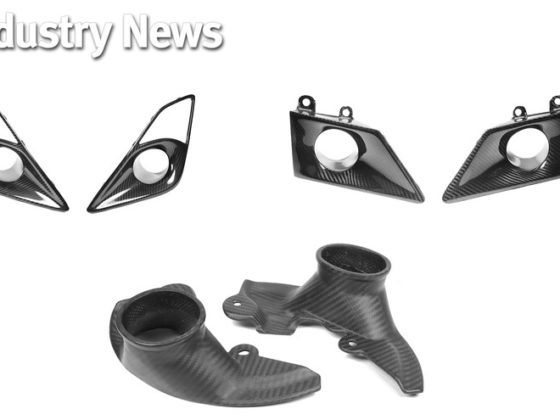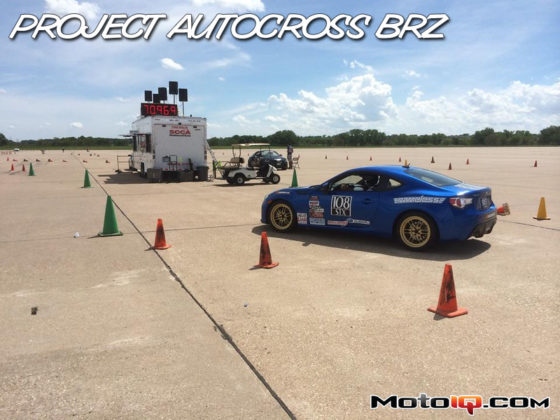,

We’ve passed BDC on the intake stroke. The piston has started moving back up the cylinder to compress the mixture. We haven’t fully closed the intake valve yet, however. Remember that the air/fuel mixture has inertia, so it took a little time to get it moving. Once we got it moving, it gained some momentum, so it takes a little time to stop moving, as well. If we close the intake valve too soon, we’ll lose the advantage of all that momentum, so we leave it open well past BDC. This allows us to stuff a little more intake charge into the cylinder. (IVC notes: Exactly where the cam designer decides to close the valve is most strongly influenced by the desired operating rpm range of the engine. Even though the pressure in the cylinder is rising as the piston moves up the bore, the intake charge has enough momentum to overcome this pressure difference, and the fuel/air mixture can continue to flow into the cylinder, packing in the potential for more power. At higher rpm, the intake charge has more momentum, so the valve can stay open longer to take advantage of this. At lower rpm, the intake charge has less momentum, so if we leave the valve open longer, we push some of that intake charge back through the intake valves (this is called reversion), which results in rough running.

We’re approaching TDC on the compression stroke. The intake valve has closed (IVC), and the piston has compressed the mixture.
 The spark plus is firing just before TDC and the mixture is starting to burn, leading us to the power stroke once more.
The spark plus is firing just before TDC and the mixture is starting to burn, leading us to the power stroke once more.Now, with hopefully a little more understanding of the valve events themselves, we can gain a deeper understanding of camshaft design. Earlier, I mentioned that a camshaft designer really doesn’t begin with a specific duration target – the duration is actually determined by the timing of the valve events. When the designer sits down to develop a camshaft profile for a specific engine configuration, he has a specific set of modifications in mind that he will be designing around – things like headers, a free flowing exhaust, modified intake system, higher compression ratio, cylinder head porting, valve area, valve springs, flow bench results, etc… Based on these modifications, he determines the timing of the valve events, and the amount of lift necessary. The duration then becomes a by-product of these decisions.
Let’s throw out some numbers to drive home this point. We’ll say that the designer decides IVO should occur at 5 degrees Before TDC (BTDC), and IVC at 35 degrees After BDC (ABDC). From TDC to BDC is, of course, 180 degrees of crankshaft rotation, so our total duration is:
5(BTDC) + 180(TDC to BDC) + 35(ABDC) = 220 degrees.
A cam for another application may call for IVO at 10 degrees BTDC and 30 degrees ABDC. Math shows us that:
10 + 180 + 30 = 220 degrees.
Same duration, different running characteristics. All other things being equal, because the first cam has a later intake valve closing, it will likely make peak power in a higher rpm range compared to the first. This is why duration can be deceptive.
A final concept that I’d like you to grasp is that for a given engine configuration (configuration here includes just about every variable – compression ratio, engine temperature, air temperature, exhaust system design, intake system, ignition, combustion chamber design, valve area, etc…), a camshaft can be optimized for only one engine speed. At only one point in the rpm range can a camshaft be absolutely ideal. On the dyno, this presents itself as your torque peak. The big reason for this, which I emphasized earlier, is the fact that the intake charge, and also the exhaust gases, have inertia, which means it takes force and time to get those things moving and it takes force and time for them to stop. So whether you are at 1000 rpm or 10,000 rpm, it still takes a finite amount of time to move our intake charge from the intake manifold into the cylinder, and our exhaust gases from the cylinder into the exhaust. At higher engine speeds, we need to allow more time for these things to happen, which is why longer duration/higher overlap camshafts make their peak power at higher rpm. As with almost any performance improvement, there are always compromises, so, when choosing your camshaft(s), chose carefully! One of the biggest mistakes people make when choosing a cam is selecting a profile that is too aggressive for the modifications and rpm range of their engine. That lopey idle may sound badass, but it won’t make much more power, and may even make less than what they started with!
Stay tuned for the follow-up to this article, where I’ll discuss camshaft terminology, and we’ll delve into the language of camshafts and their specifications. Now that you have an understanding of valve events, hopefully you’ll have a better feel for what camshaft might be best suited to your application.



